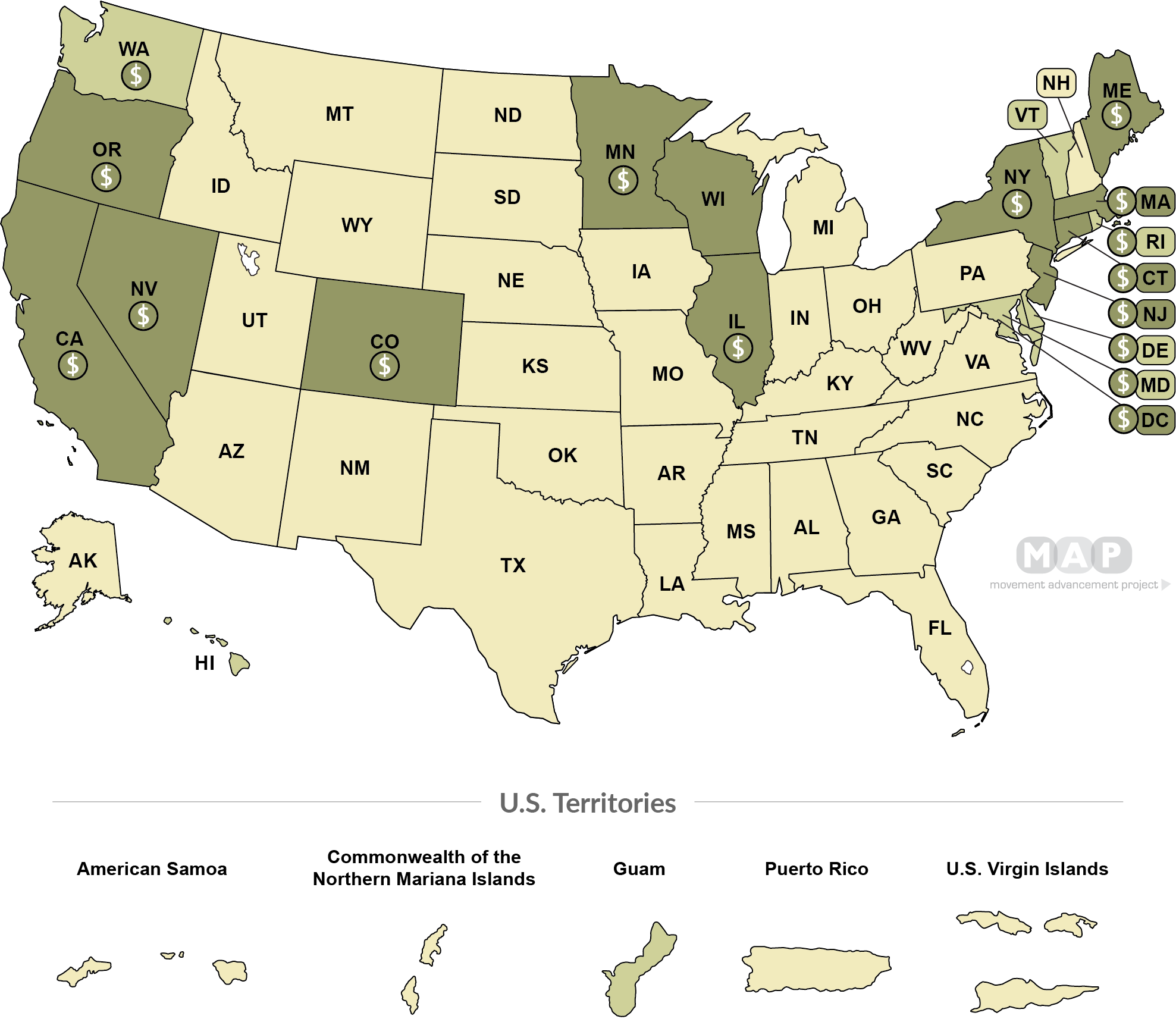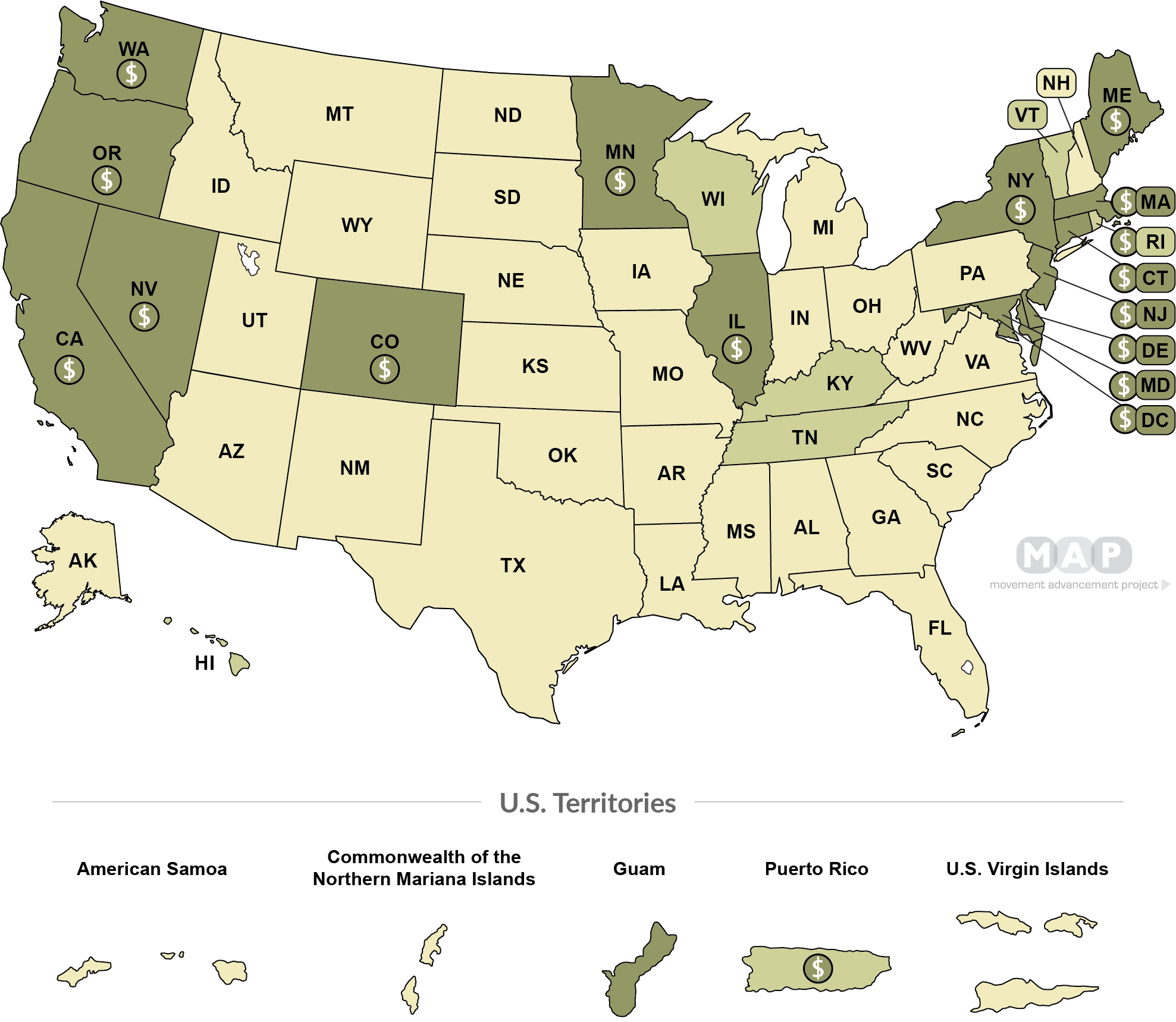Recommended citation:
Movement Advancement Project. "Equality Maps: Family Leave Laws." https://www.lgbtmap.org/equality-maps/fmla_laws. Accessed 10/16/2025.
Note: For some states with recently passed paid leave laws, access to paid leave has not yet begun. These include CO, CT, MA, and OR. For more, visit A Better Balance.
Workers caring for children who are not their legal children can still take federal FMLA leave as the federal government does not require the person acting as a parent to be a legal parent to the child. Maryland's leave law does not explicitly define child; the Commissioner on Labor and Industry has proposed regulations that would adopt the federal Family Medical Leave Act rules and regulations.
Some cities and counties (including but not limited to those below) have passed local-level sick or family leave laws. These vary considerably in scope, coverage, and definitions. For more information on the specifics of these laws, visit A Better Balance.
Berkeley, CA
Emeryville, CA
Long Beach, CA
Los Angeles, CA
Oakland, CA
San Diego, CA
San Francisco, CA
Chicago, IL
Cook County, IL
Montgomery County, MD
Minneapolis, MN
St. Paul, MN
Bloomfield, NJ
East Orange, NJ
Elizabeth, NJ
Irvington, NJ
Jersey City, NJ
Montclair, NJ
Morristown, NJ
Newark, NJ
Passaic, NJ
Paterson, NJ
Plainfield, NJ
Trenton, NJ
New York City, NY
Portland, OR
Philadelphia, PA
Pittsburgh, PA
Seatac, WA
Seattle, WA
Spokane, WA
Tacoma, WA
Milwaukee, WI




